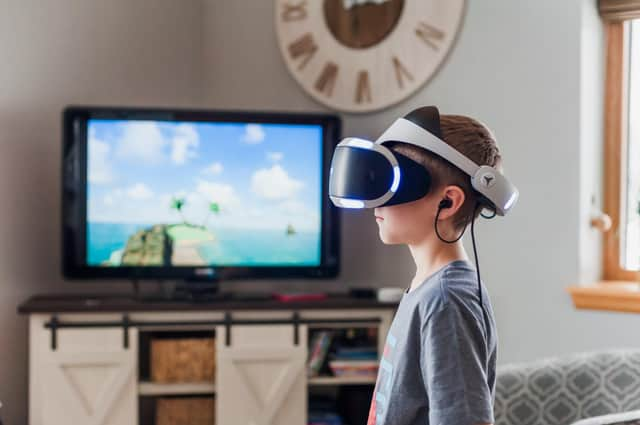Virtual reality headsets can lead to 'cybersickness' but new research in Scotland may have discovered a world-leading solution – Dr Gang Li


When it comes to the video platform, VR can provide new realms for immersive gaming, but unfortunately not all players can enjoy the experience. Similar to how some people suffer from car sickness, it seems that some players suffer from VR headset-induced motion sickness or ‘cybersickness’.
Mitigating this issue is especially pressing given the therapeutic applications for VR headsets. While the immersive experience can provide calming effects for conditions such as anxiety or pain, the unpleasant side effect of nausea negates any therapeutic benefits.
Advertisement
Hide AdAdvertisement
Hide AdDespite the rapid expansion of the commercial market and uses for VR technologies since 2016, the complex problem of cybersickness still persists due to it touching many scientific fields, including computing science, biomedical engineering, psychology, and neuroscience.
Funding from the Royal Society of Edinburgh has supported a research project in collaboration with the medical centre at the University of California, San Francisco. The project explored a potential method of neurostimulation that mitigated cybersickness by masking the sensations of the imaginary self-motion from the vestibular system – the body’s balance mechanism – without the need to redesign existing VR content.
I travelled to the USA to demonstrate this research to a team of leading American neuroscientists. It involved a member of the audience wearing a VR headset and riding a virtual rollercoaster while having their brain waves monitored.
Through this demonstration and ensuing research, we designed a new way of stimulating the brain. Specifically, we found a unique activity pattern in the brain’s left parietal lobe, which is part of our vestibular network, which linked to the severity of cybersickness.
To counteract this brain activity, we designed the exact opposite pattern and employed a non-invasive brain electrostimulation technique to block the symptoms from manifesting. Using an electric current to directly manipulate brain activity showed initial signs that the sickness had been accurately and rapidly mitigated.
Following that collaboration, the research is being rolled out to human subjects in Scotland. These additional results should provide enough data to develop a wearable box-like device, compatible with commercial VR headsets, to stimulate the brain and mitigate symptoms of nausea.
The potential for such a device has already started to gain traction, leading to an ambition for Scotland to be the leading home of research into cybersickness solutions globally. Developing targeted digital interventions could also play a significant role in Scotland’s National Care Service by providing better digital medicine or healthcare services at home without the need for hospital care.
This research and its discoveries are essential to building “side-effect-free” VR therapies, and will prove vital to achieving the full potential of health-care applications for VR.
Advertisement
Hide AdAdvertisement
Hide AdDr Gang Li is a research associate in psychology at the University of Glasgow and recipient of a Royal Society of Edinburgh International Joint Project Award in 2021. This article expresses his own views. The RSE is Scotland's national academy, bringing great minds together to contribute to the social, cultural and economic well-being of Scotland. Find out more at rse.org.uk and @RoyalSocEd
Comments
Want to join the conversation? Please or to comment on this article.
